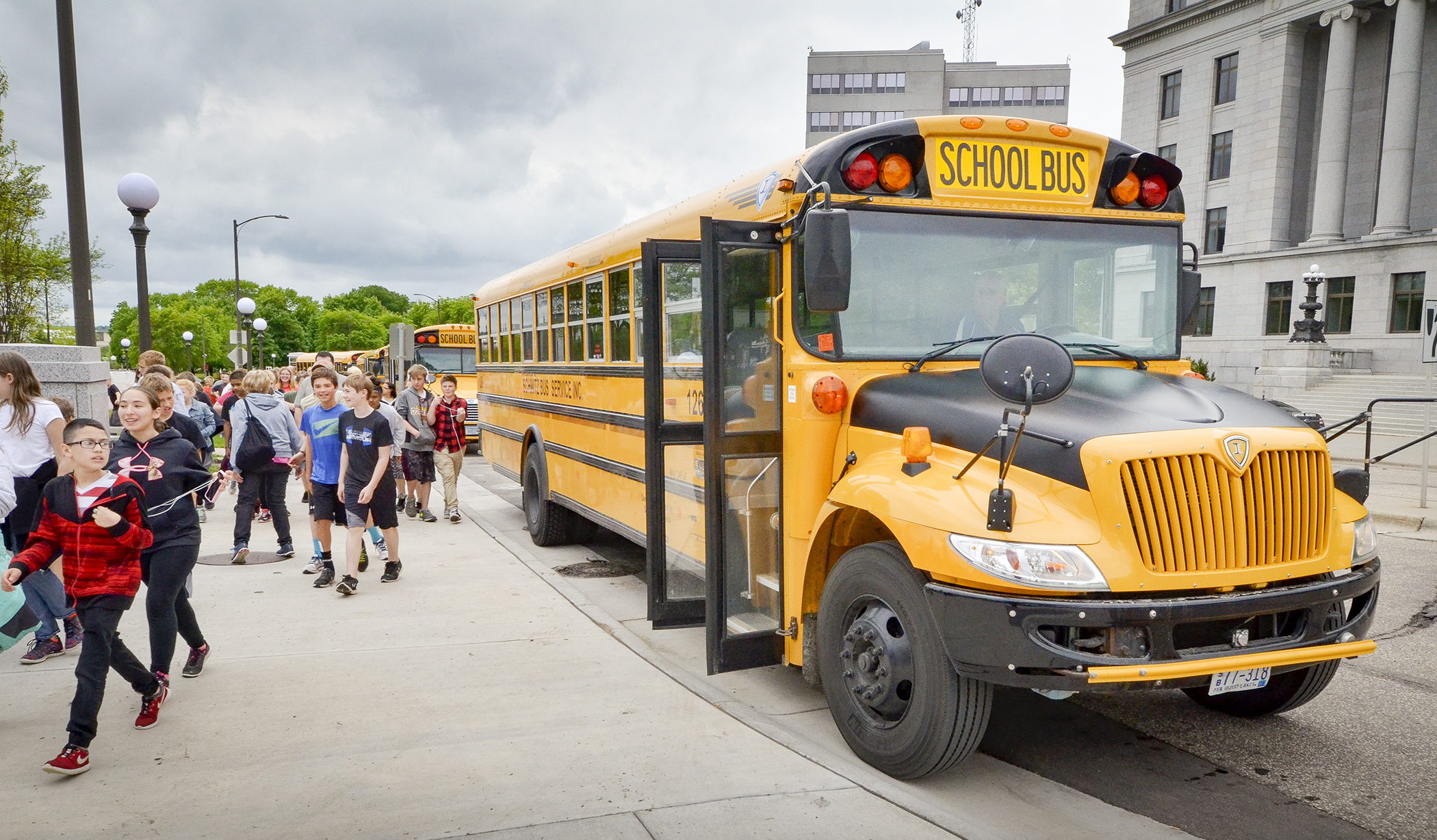Wheels on the bus go round and round — but for many school districts, that’s an impossibly high cost

The morning commute to school is as simple as hopping aboard that big yellow bus and riding it across town, right? Not so for many kids in Minnesota, where some school districts encompass vast distances and operate dozens of long-winding routes.
Due to a quirk in state funding, many of these geographically large districts run budgetary deficits owing to high transportation costs. HF877 would put a major dent in those yearly funding gaps.
“Around Minnesota, as you know, we have school districts of various shapes and sizes,” said Rep. Josiah Hill (DFL-Stillwater), the bill’s sponsor. “Our hope here would be to support our school districts that are transporting students further, thereby incurring greater costs.”
The House Education Finance Committee heard the spending request on Tuesday, laying it over for possible omnibus bill inclusion.
The crux of the issue is this: the pupil transportation sparsity formula is determined primarily by enrollment size, not miles driven in a given district. This means that spaced out, sparsely populated school districts routinely spend far more on student transportation than they receive in state aid.
When faced with these persistent deficits, districts are obligated to transfer money from their general operational budgets, thus debasing the education they offer to students once they arrive at school.
In 2017, a transportation sparsity adjustment was added to the funding formula, reimbursing districts 18.2% of their yearly transportation cross subsidy. Hill’s bill would increase this reimbursement rate almost fourfold to 70%. Per a fiscal note, this would amount to nearly $25 million in the next biennium and just over $30 million for fiscal years 2026-27.
A trio of superintendents beseeched the committee to help cover their districts’ steep funding deficits by approving the adjustment increase.
Steve Massey, superintendent of Forest Lake Schools, noted that transportation funding inequities date back to 1995 and while the sparsity adjustment has been beneficial, it simply is inadequate for a district of his size. Forest Lake buses drive over 5,500 miles on an average day – the distance from Key West, Fla., to Anchorage, Alaska.
The district is forced to move approximately $500,000 from its general fund to cover the yearly transportation deficit, Massey said.
“We have about 120 buses that we run on a daily basis,” said Michael Funk, superintendent of Stillwater Area Schools. “Fuel prices have gone up significantly, and yet, you know, we receive similar sparsity aid that we have for years and years.”
Because of this, Stillwater has cut back on buses for students participating in after-school activities that live at the extreme ends of the district.
Notably, the proposal garnered bipartisan support. Hill mentioned that former Republican Rep. Bob Dettmer carried the bill in previous sessions, while Rep. Patti Anderson (R-Dellwood) said, “I wholeheartedly support this bill.”
Related Articles
Search Session Daily
Advanced Search OptionsPriority Dailies
Speaker Emerita Melissa Hortman, husband killed in attack
By HPIS Staff House Speaker Emerita Melissa Hortman (DFL-Brooklyn Park) and her husband, Mark, were fatally shot in their home early Saturday morning.
Gov. Tim Walz announced the news dur...
House Speaker Emerita Melissa Hortman (DFL-Brooklyn Park) and her husband, Mark, were fatally shot in their home early Saturday morning.
Gov. Tim Walz announced the news dur...
Lawmakers deliver budget bills to governor's desk in one-day special session
By Mike Cook About that talk of needing all 21 hours left in a legislative day to complete a special session?
House members were more than up to the challenge Monday. Beginning at 10 a.m...
About that talk of needing all 21 hours left in a legislative day to complete a special session?
House members were more than up to the challenge Monday. Beginning at 10 a.m...